Generations have made their fortunes, to one degree or another, promoting Venice as a city of mystery, secrets, enigmas. What amazes me, though, is how many discoveries one can make by just looking around. It’s not as if you have to go looking for secrets — there are plenty of extraordinary things sitting right out there in the open, in front of everybody, but that go unnoticed for ages.
I have walked with Venetians, on our way to do something, who have suddenly stopped, looked up at/around/behind/next to some normal thing (a bridge, a window, a door) at something strange or beautiful and said, “I never saw that before.”
So here is something I saw because I looked up. Was it a secret? Only from me until that afternoon.
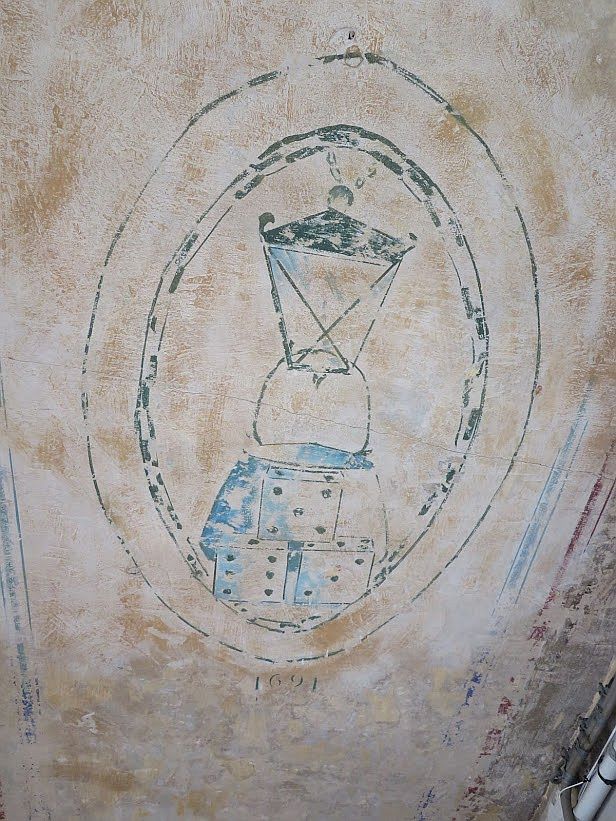
This fresco isn’t far from San Marco at the intersection of the Rio Tera’ de le Colone and Calle dei Fabbri. Here is a map to clarify.

Looking up as I walked west along the columned walkway …
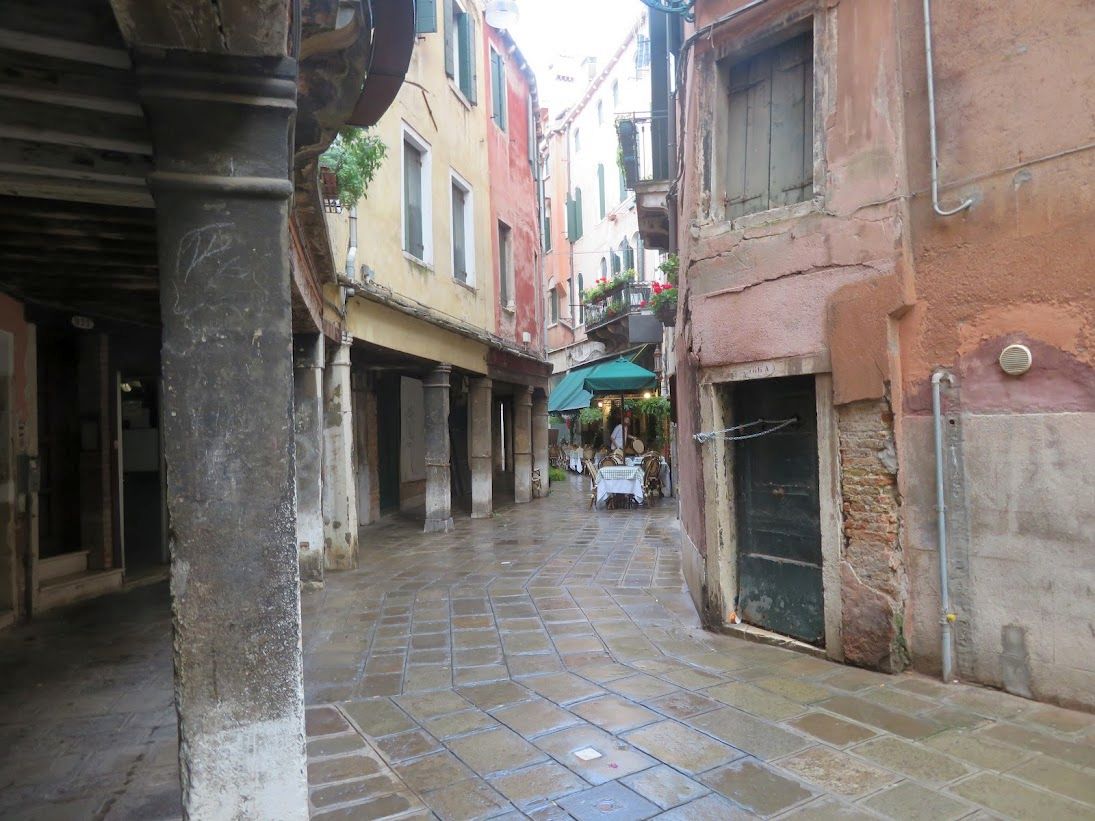
I came upon this, as previously noted:
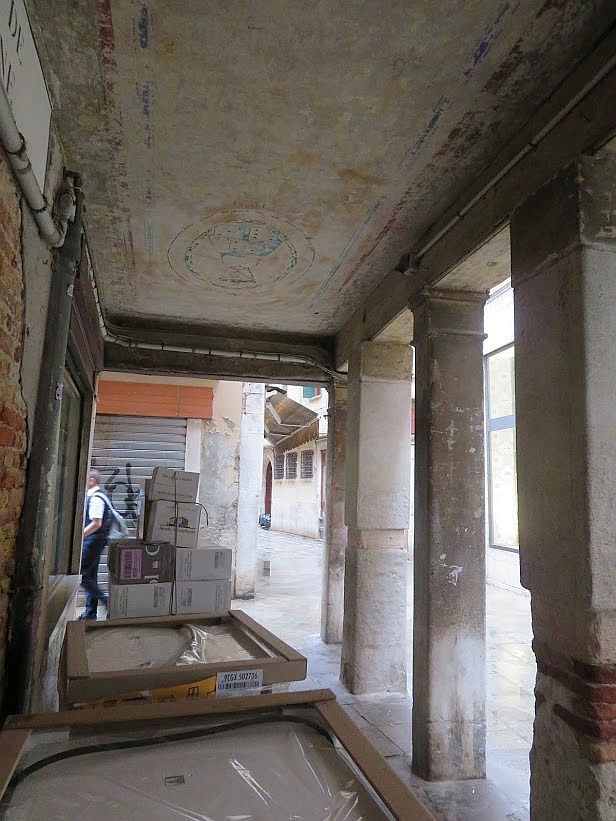
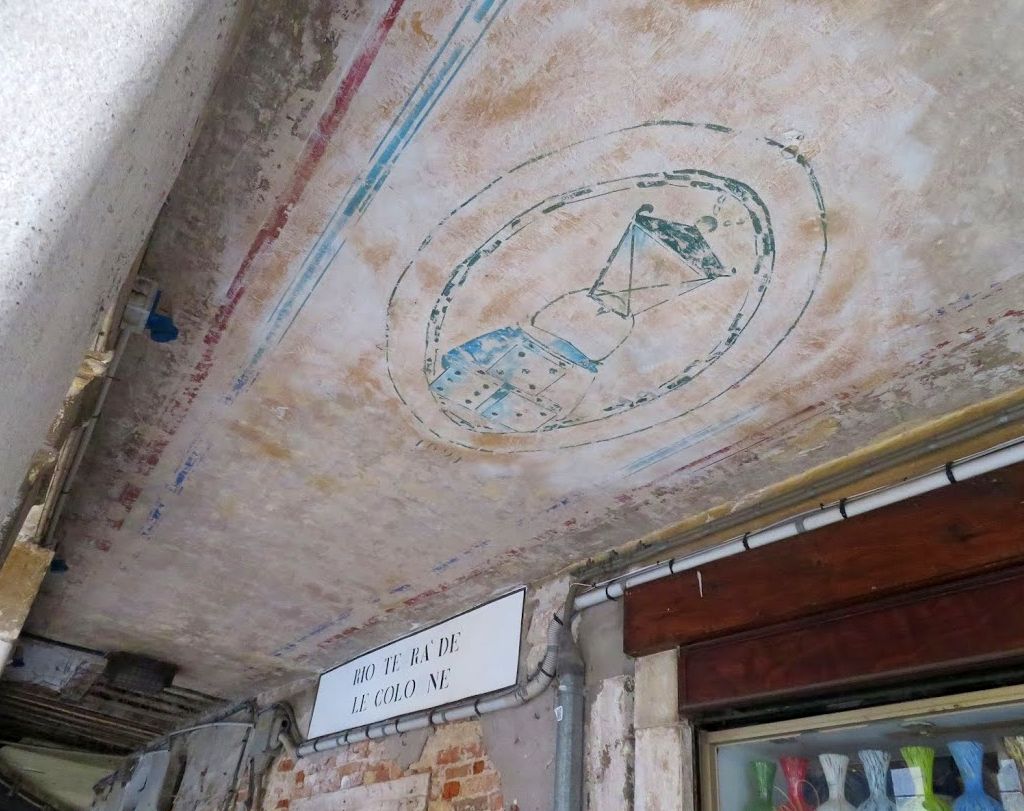
Back to the fresco at hand. My first theory was wrong, of course, but I wasn’t alone in supposing the dice in this design to be a mystic reminder of what may have been a gambling establishment back in 1691. There were plenty of them, but people probably didn’t need signs to show them where to go, mainly because gambling was mostly illegal.
Rummaging through the internet I found that several people had also found it reasonable to suppose that gambling inspired this curious fresco. But then I was even more surprised to discover a much simpler explanation. No need to go any further back than the 1980s and a particularly whimsical artist named Dorino Cioffi (born 1932 in Este, Veneto region), now living and working in Venice.
I could go find him and ask him about all this, and I’m not saying I won’t, but I wanted to get this little tale out into the ether. Whatever his motivations might have been, and however he may have managed to get permission to paint on a public space (“No worries, it’ll be down by Wednesday”), he created this diverting little image. Fooling people is so much fun. Carnival comes to mind.
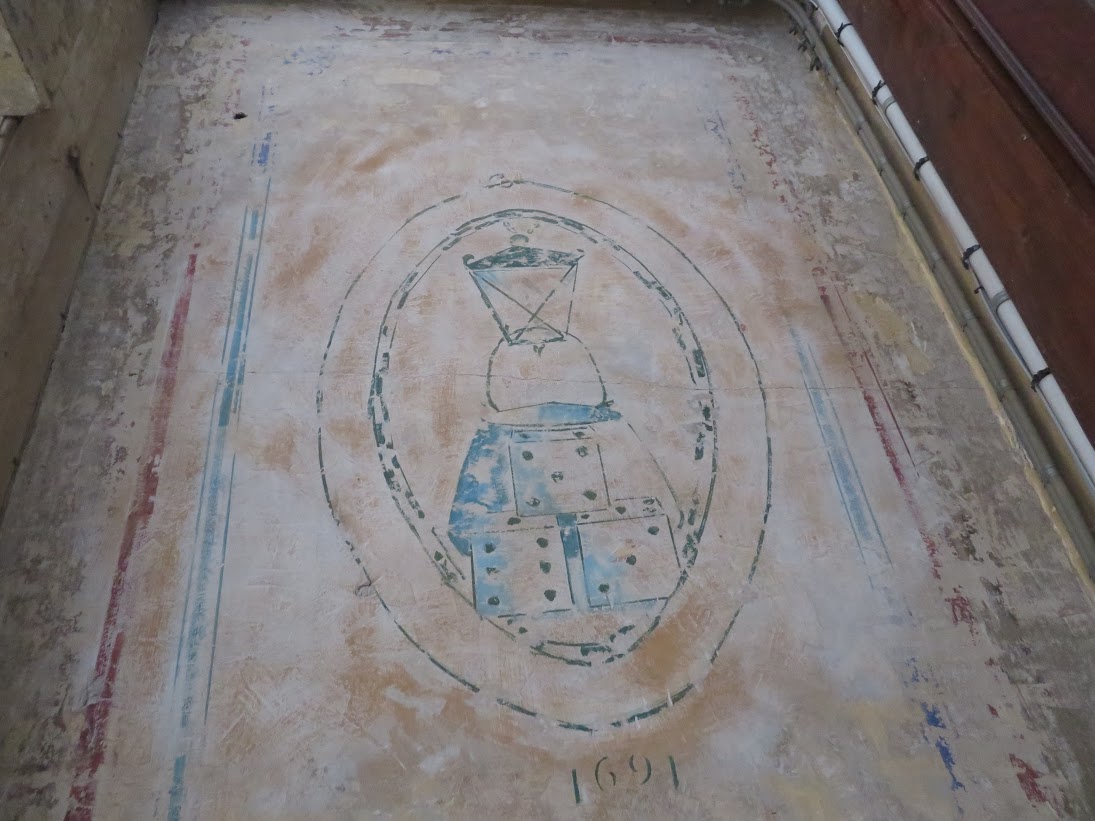
For reasons as yet, if ever, to be discovered, the artist devised this image to refer to the three bridges nearest to the location of the fresco. I don’t know why that spot was chosen, though if you’ve decided you want to paint on an outdoor ceiling, your options are already limited.

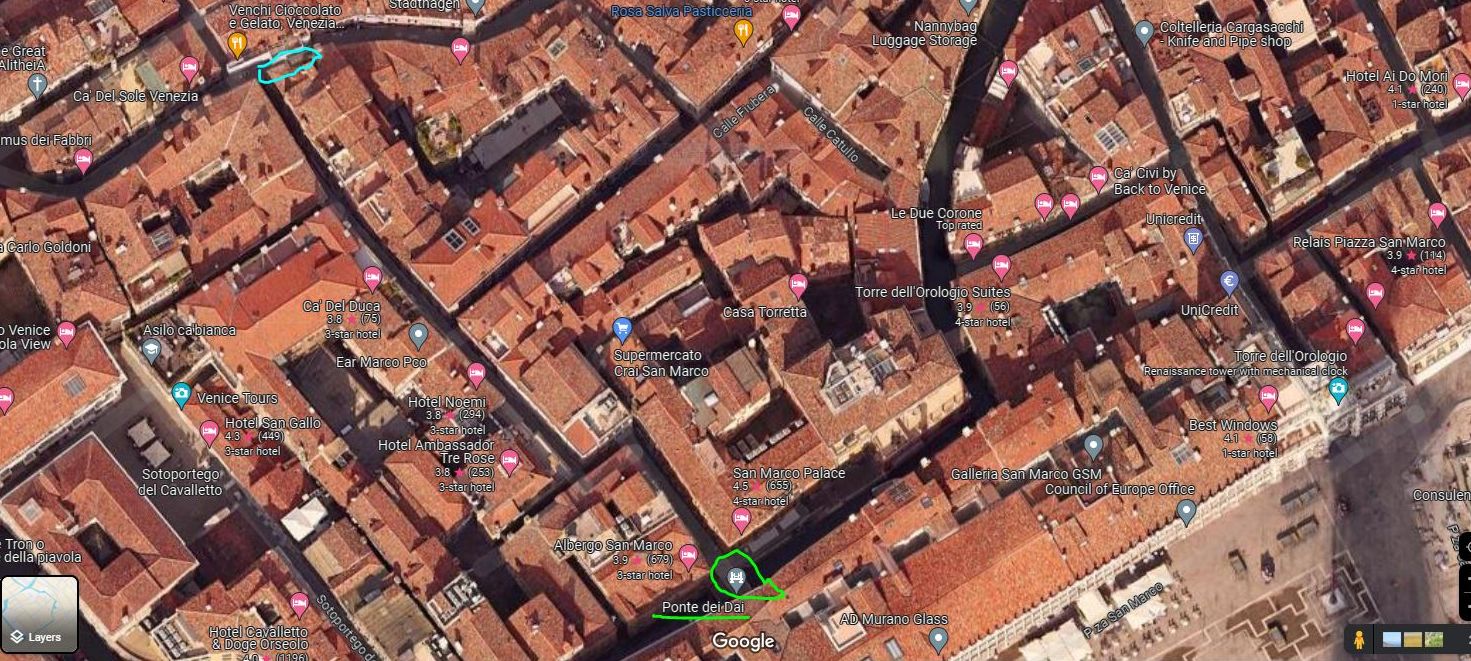
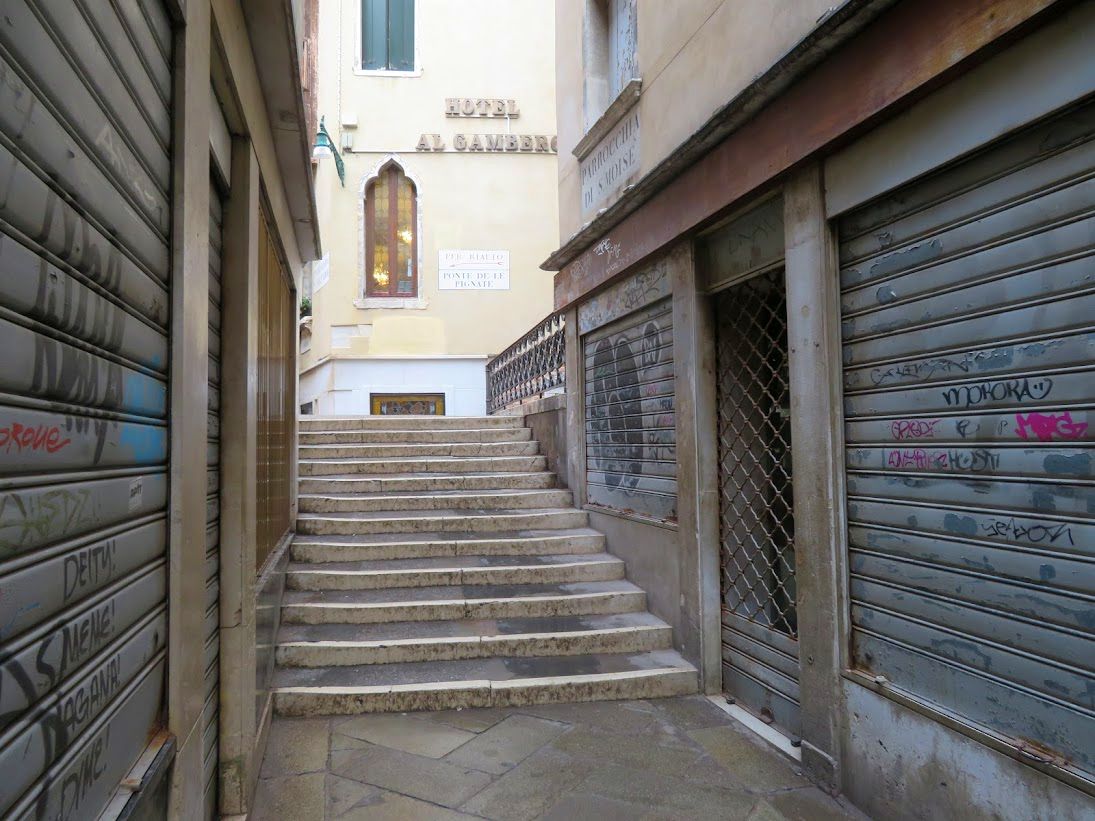
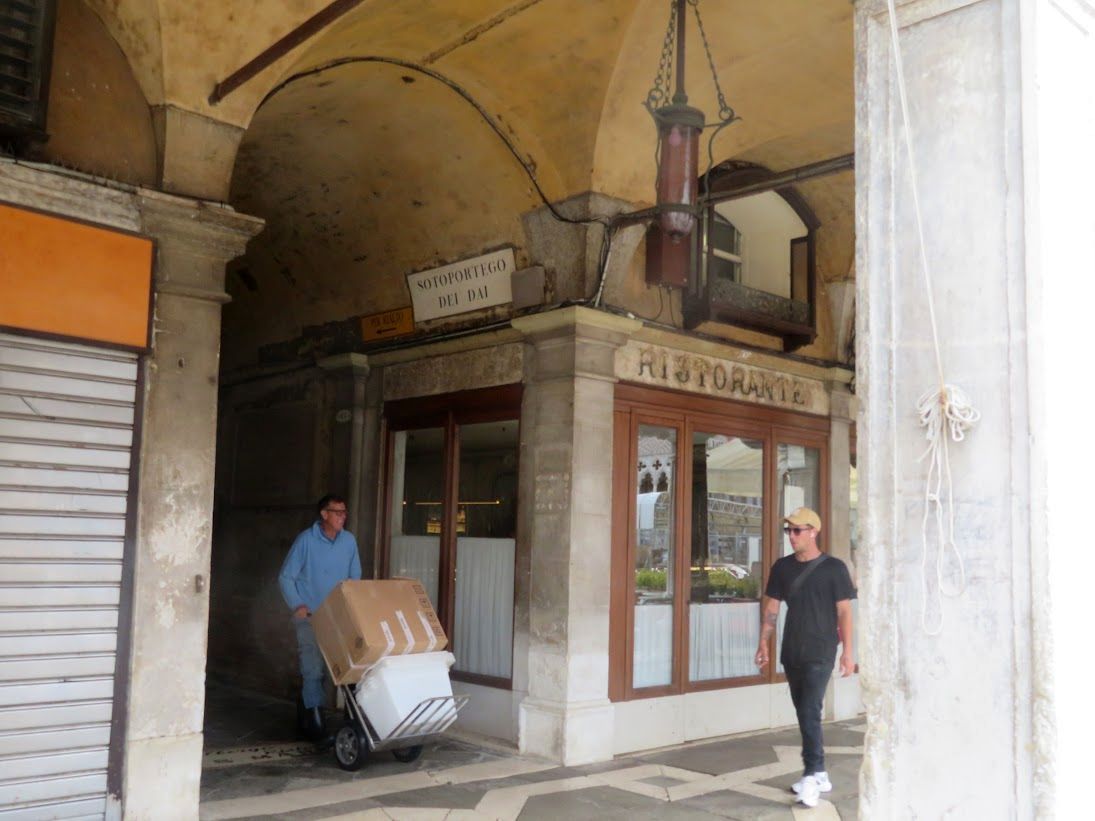



The names of the bridges, like the streets, referred to something that was made, or sold, or both, on or near that bridge. As far back as the 1200’s the feraleri, or makers of streetlights (ferali), had set up their shops on nearby streets, as well as on the bridge itself (do not ask me how that worked). The same explanation applies to the pignate (cooking pots).
As for the dai (the original name was dadi, or dice), they were not so much produced as simply sold near their eponymous bridge. This is amusing, considering that gambling with dice was forbidden. You and your friends might call a place the “bridge of crack cocaine” if that’s what makes sense to you, but painting the name on an official street sign would be strange. I think we can agree on that?
You may be awaiting more information on the pots and the dice, which I suppose there is, but the streetlights turn out to be far more interesting than the other two items put together. (Do not recommend.) As I leave the eccentric fresco behind, though, I can say that without it I almost certainly wouldn’t have given a thought to the lamps.
My next post will be shedding plenty of light on the subject.
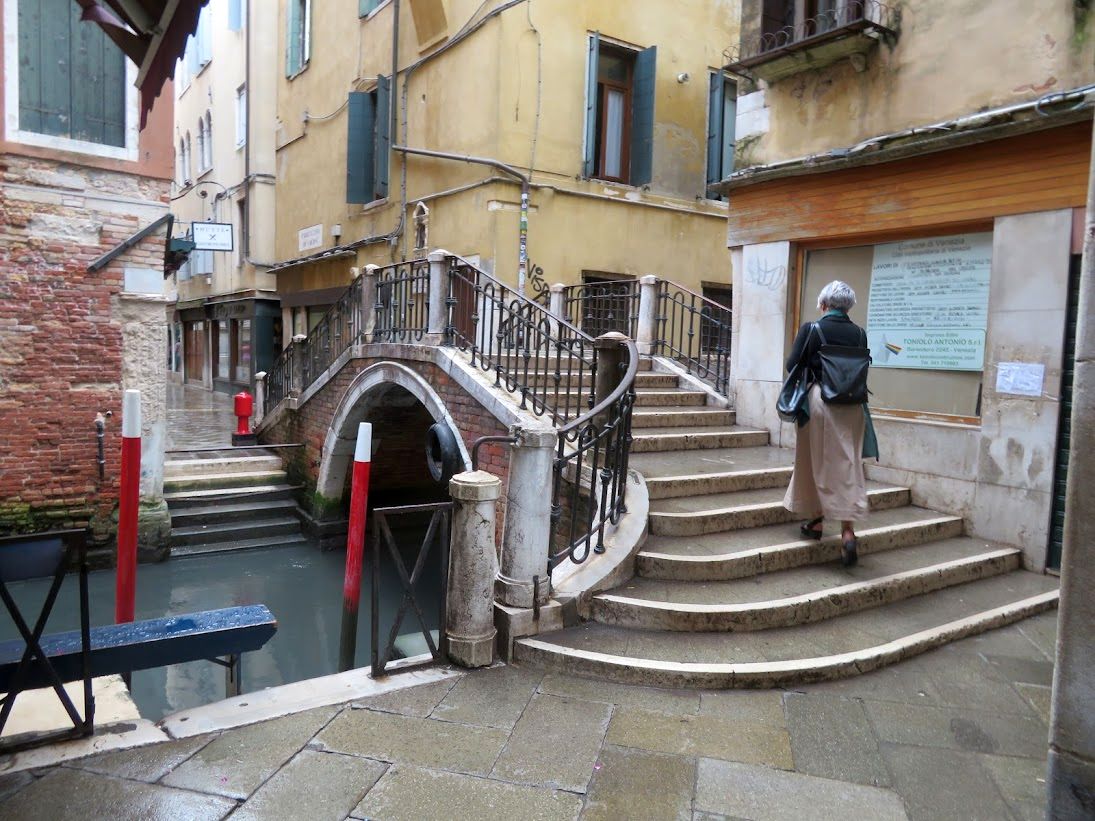


13 Comments
I am always happy to see your newsletter in my inbox! As someone who tries to help travelers appreciate the curiosities of history via the internet, I think you do justice to one of the world’s greatest cities.
So enjoyed this—can hardly wait for the followup. Ah, the daily pleasure of seeing & searching in la Serenissima….
Bellissimo saggio. Vengo a Venezia a settembre. E non vedo l’ora di fare lunghe passeggiate per la vostra città.
Okay, now I’ve stumbled into something in the style of Dan Brown. Symbolism galore. I can’t wait for the next episode to this mystery.
It’s fake symbolism. It’s a lamp, a pot, and two dice representing the nearby bridges. The only mystery here, as far as I can see, is why Sig. Cioffi decided to do it. Bonus points: How he managed to convince the city to let him. If I ever succeed in finding him, I’ll have plenty of questions to ask.
You are killing me here! Your stories and the photos in this blog make me want to get my skinny old lady ass back to Venice and wander around and get lost again and again and again, again!!!!
Sigh! What a magical town, and I miss being there!
Very fun. It always pays to look up, and look down, and not just for falling pianos or open manhole covers.
Really amazing! How were you able to find out? It’s a marvellous story!
In the Old Days it would have taken weeks or months of hard labor, but nowadays you just have to do laps through Google (backstroke, Australian crawl, breaststroke….) till you’re exhausted or you get enough information to keep searching further. The secret is that you have to want to do it….
Wow! I am a lover of “trivia.” Not suggesting that this is trivia, however. I doubt that I will ever travel to Venice or anywhere outside my state again. I so want to share this great and informative blog with a friend who would really appreciate the detailed information you write! Unfortunately, she died over a year ago. She was what some would call a “pedant.” She loved details and simply “knowing things” just for the sake of knowing them. I guess I am that way, too. Thanks so much and please do not stop writing your good blog, if that’s what I should call it!
Thank you so much for your heartwarming enthusiasm for my blog. Your friend could certainly love details and knowing things for their own sake without being a pedant. I doubt that pedants inspire anything resembling your affection for her, so whatever we want to call her, she’s simply a kindred spirit. For the pedants who may be reading this, I offer this clarification:
PEDANT: a person who makes an excessive or inappropriate display of learning.
a person who overemphasizes rules or minor details.
a person who adheres rigidly to book knowledge without regard to common sense.
Synonyms: hairsplitter
Absolutely loved this story and I do hope you manage to find the artist and the reason for it. It’s two years now since my last visit and am homesick so must come again in the spring before I get too old. I love visiting Sant’Erasmo, Pelligrino and places off the tourist trails but feel I must go and find this now. Thank you Erla for keeping Venice alive in my heart.
Gracious, Jean. Thank you and you’re welcome. I mean that most sincerely.